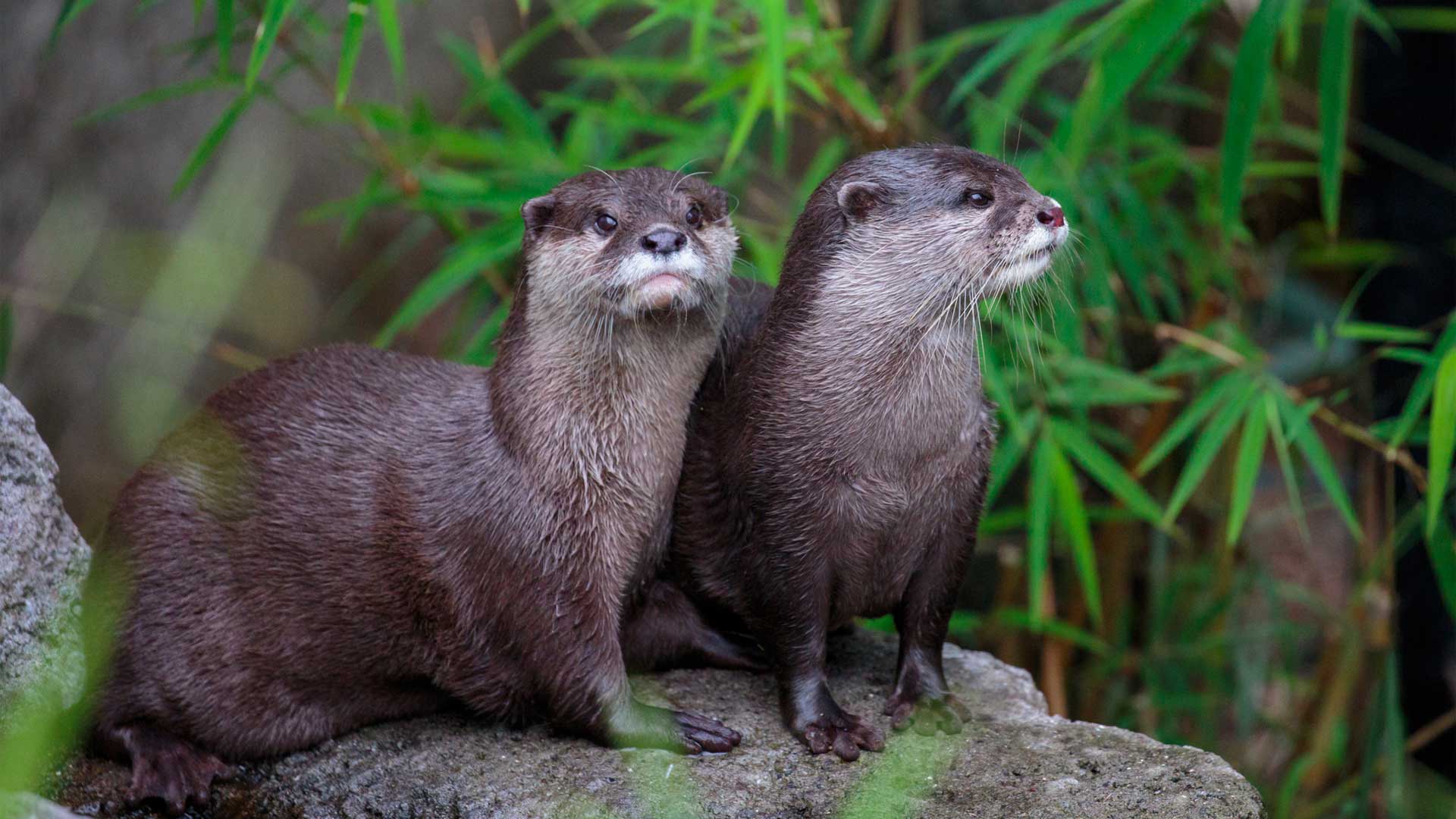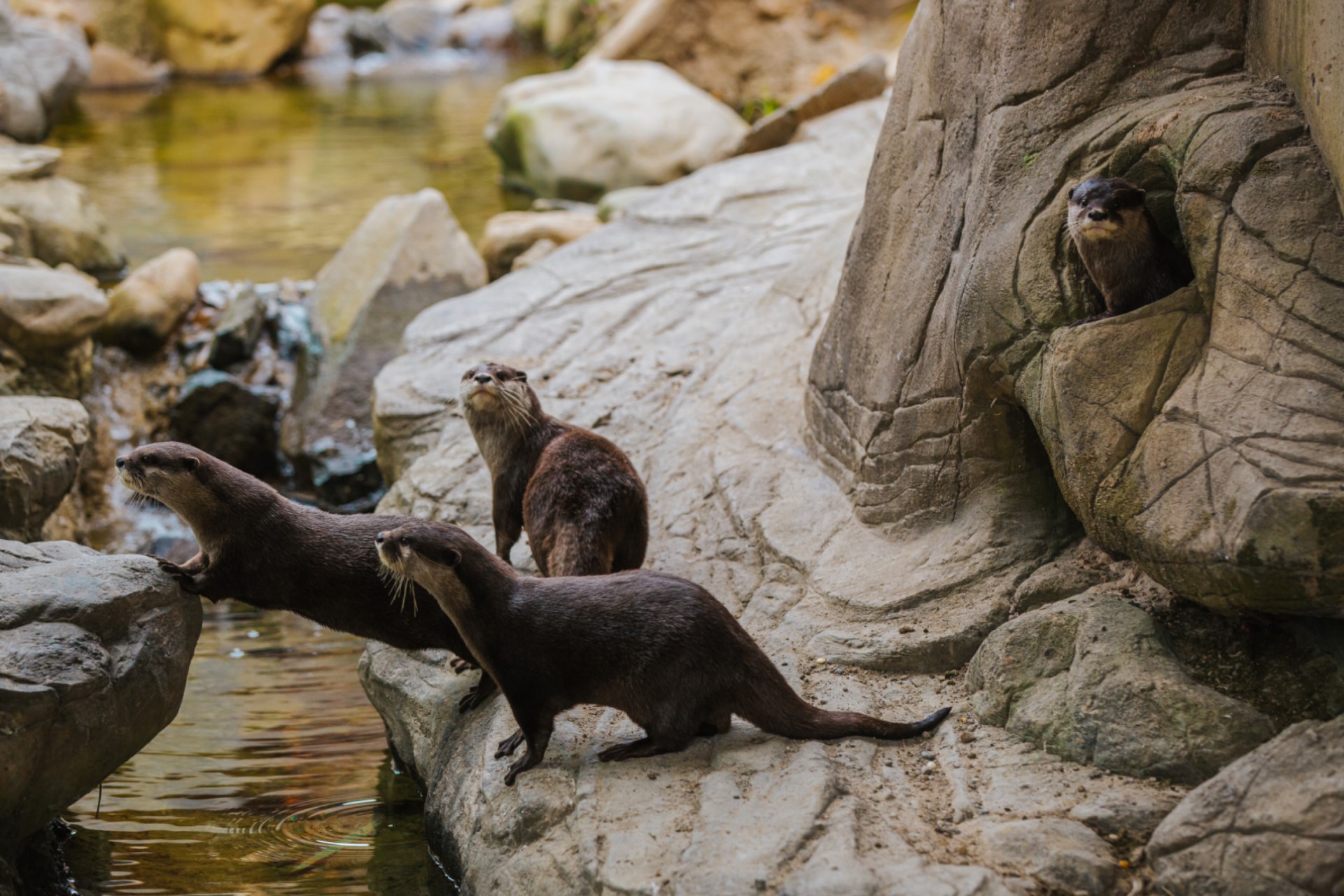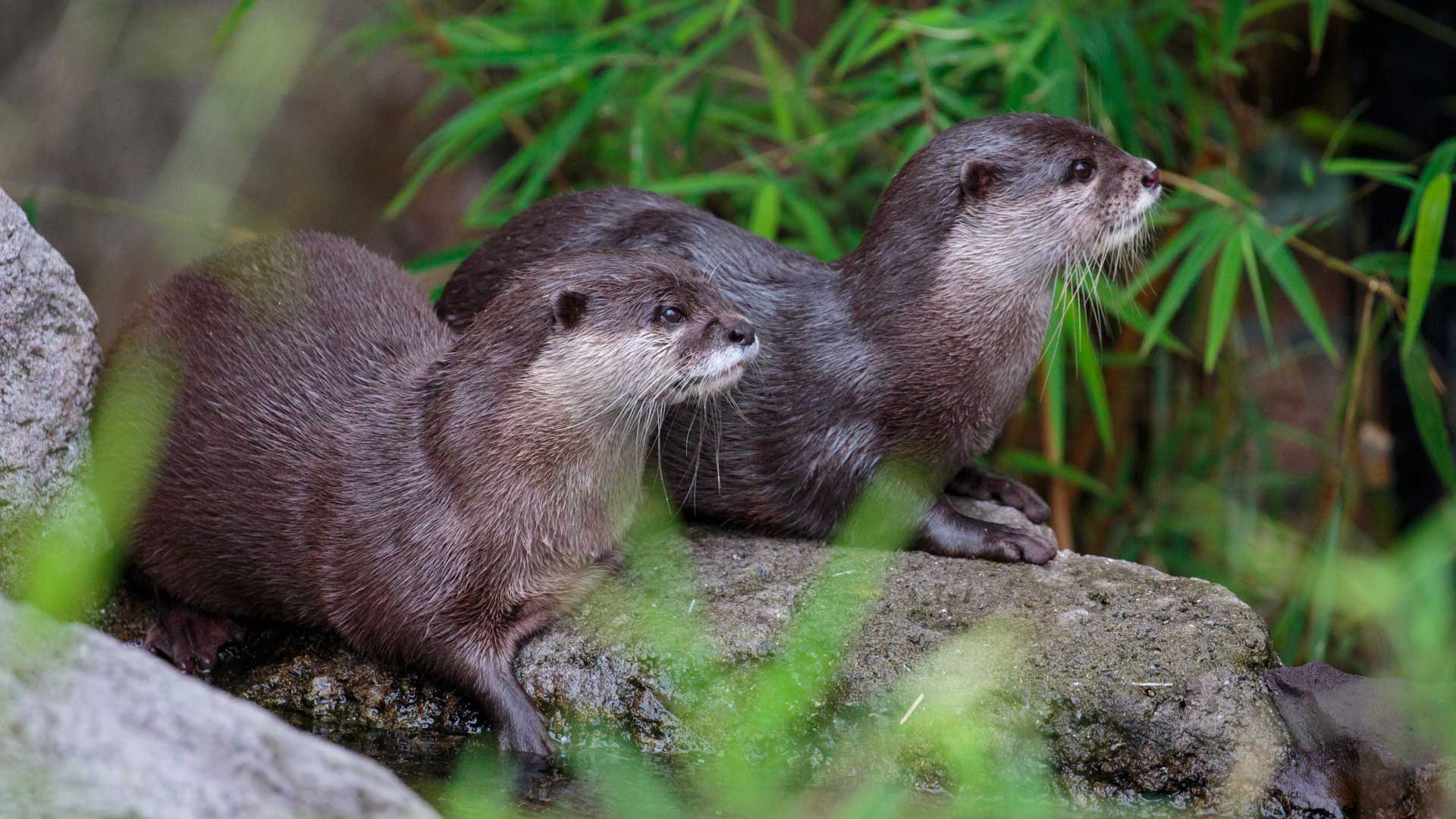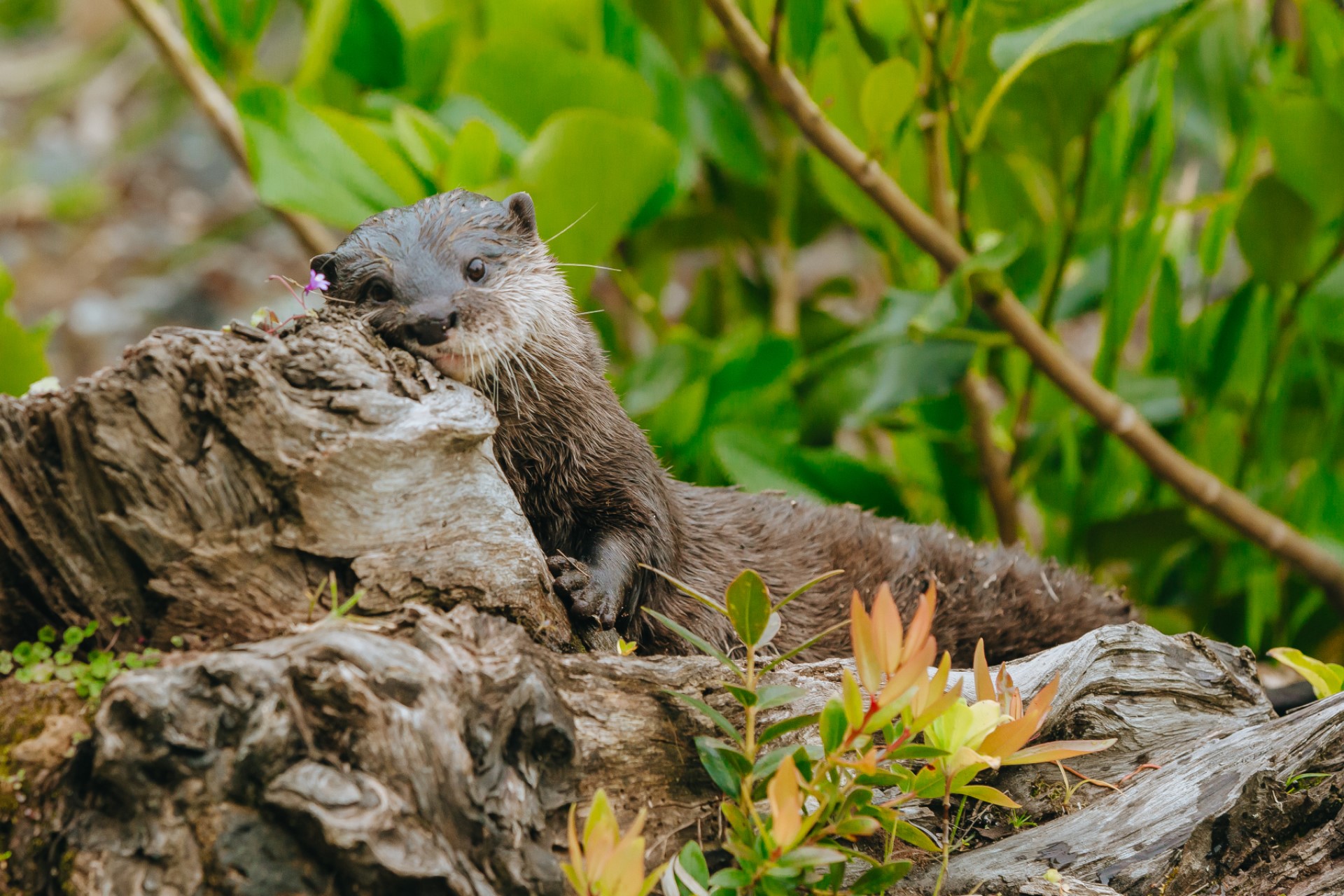Eat, sleep, swim, repeat.
You may see a stream of bubbles floating up while they swim. The air gets trapped between the two layers of fur to increase insulation and help keep them buoyant in the water. Otters also have partially webbed paws, which as well as being great for swimming, also gives them great dexterity for catching food.
Their stiff whiskers are sensitive to water turbulence and allow them to locate prey in murky water. Once caught with their paws, their strong jaws and sharp teeth make short work of prey such as crustaceans and shellfish.
What’s that smell?!
Sometimes you smell so great, you just want to share it with others! Scent-marking is one of the ways otters communicate. Scent glands are located at the base of their tail and the musky smell they emit can communicate all sorts of important information, from the otter’s identity to their sexual interest. Our otter habitat features lots of varied areas where the otters can scent-mark and our team also offer enrichment items to elicit this natural behaviour.









